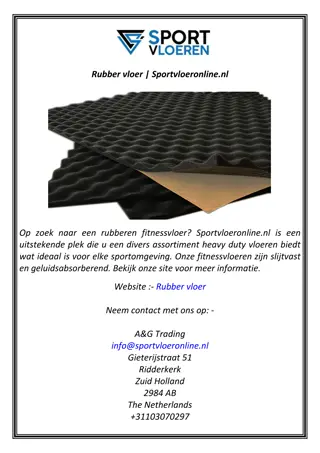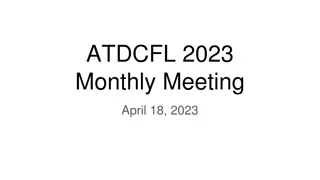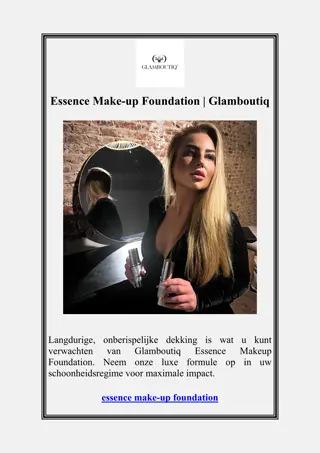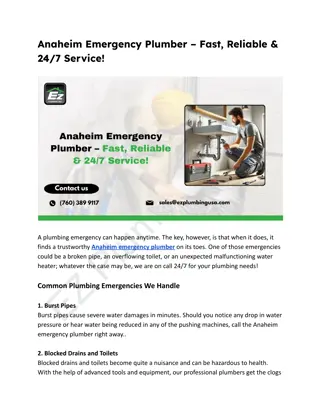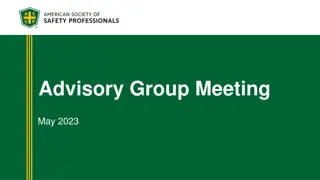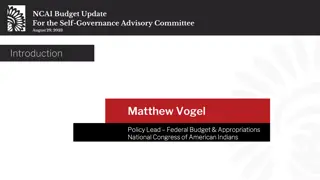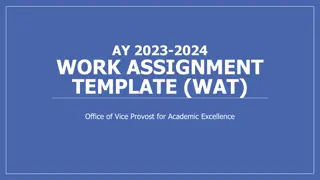
The Work Assignment Template (WAT) Process and Guidelines
Learn about the Work Assignment Template (WAT) used to track faculty members' assigned time, the process involved, timeline, purpose, and how it aids in workload policy development. Access, review, and submission steps are covered, along with the importance of utilizing the WAT platform effectively. Contact details for assistance are also provided.
Download Presentation

Please find below an Image/Link to download the presentation.
The content on the website is provided AS IS for your information and personal use only. It may not be sold, licensed, or shared on other websites without obtaining consent from the author. If you encounter any issues during the download, it is possible that the publisher has removed the file from their server.
You are allowed to download the files provided on this website for personal or commercial use, subject to the condition that they are used lawfully. All files are the property of their respective owners.
The content on the website is provided AS IS for your information and personal use only. It may not be sold, licensed, or shared on other websites without obtaining consent from the author.
E N D
Presentation Transcript
1 AY 2022-2023 2 Work Assignment Template (WAT) 3 Guide for Research Faculty Guide for Instructional Faculty Provide you links and next 4 5 6 7 Office of the Vice Provost for Academic Excellence 8
1 Purpose of WAT and what it will be used for 2 Access, Process, Timeline 3 Agenda WAT Platform Guide for Research Faculty Guide for Instructional Faculty Provide you links and next Overview of what we will be covering today 4 Changes in WAT 5 Instruction Section II 6 Non-Instruction Section III Supplemental Information 7 8
1 The work assignment template (WAT) is an annual collection of data on faculty members assigned time for the previous academic year. An aggregated annual report is made to the Board of Regents. Assigned credit hours and non-instructional equivalencies are reported 2 3 Work Assignment Template (WAT) The Work Assignment Credit Hours, reported in aggregate form in the WAT, reflect assigned time only. Qualitative evaluation of individual faculty work performed is handled through contract renewal, tenure and promotion review, and periodic review processes. Work assignment equivalencies should be used by departments, schools and colleges to develop workload policy and to guide chairs assignment of workload prospectively. Guide for Research Faculty Guide for Instructional Faculty Provide you links and next 4 Covering the purpose of WAT and what it will be used for 5 Differentiate: Assigned WCH vs. assessment of productivity 6 Example A faculty member with a 2/2 load may have had 12 credits of instruction, 9 credits (equivalencies) of research, and 3 credits (equivalencies) of service assigned. 7 8
1 Access Process Timeline 2 Dept Chair reviews templates to ensure all faculty are listed (those with less than .10 FTE and lecturers will not show up) Inform Faculty of WAT access for their viewing Dept Chair works with Faculty to input information Dept Chair reviews and submits to Dean Dean approves and sends to OVPAE WAT opens Sept 6, 2023 Unit s develop their own internal deadlines Deans/Directors submit to OVPAE by Nov. 17, 2023 OVPAE sends to IRAPO by Nov. 22, 2023 IRAPO submits to BOR by January Excel sheet WAT Link Excel sheet - this will allow you to see who currently has access and allows for you to edit if there has been change in roles/personnel WAT Link data.hawaii.edu/wat/#/ 3 Access, Process & Timeline Guide for Research Faculty Guide for Instructional Faculty 4 Provide you links and next steps with deadlines for M noa and System 5 6 7 8
1 Reference Guide Found under the FAQ s tab in the WAT Platform 2 Depending on your specific role (e.g., Faculty Member or Department Chair) you may have a different view in the platform 3 WAT Platform Guide for Research Faculty Guide for Instructional Faculty 4 Guide on utilizing the WAT Platform If the WAT link does not work, please try to clear cache first and use Google Chrome, if both do not work then contact me directly at voong@hawaii.edu voong@hawaii.edu 5 As this is a retroactive data collection, please make sure to select AY 2022-2023 6 If a faculty member has a joint position both units will have access to the faculty member s template please verify what would fall under your purview. 7 8
1 1. Excel sheet download (see pg. 9 of reference guide) but you can no longer upload batch submissions. Information can only be manually entered into the platform 2 2. New: there will be on-screen help as you navigate through the platform 3 Changes WAT Platform 3. The look of the platform has changed - all employment information is viewable on the left of the platform. This includes the template status (e.g., Draft, Review). Highlights major changes in the WAT platform from last year Guide for Research Faculty n utilizing the WAT 4 4. Changes were made in Section III - Non-Instructional which we will go over on slide #8. 5 5. Icons a green checkbox will appear if faculty member met their workload basis, a yellow triangle with exclamation mark can mean a few things: a) Faculty member s template has not been reviewed yet, b) Faculty member s template has validation errors, or c) Faculty member did not meet workload basis last academic year 6 7 6. Based on faculty feedback, Section IV now includes Overload- Instruction during the off-duty period 8
1 Data is pulled from banner Please verify the information with the faculty member, if changes are needed please modify and provide context to the changes in Classroom TE Adjustment Justification Overload at this juncture is specific to teaching AND during the on- duty period 2 Instruction Data 3 Instruction Highlights on Instruction: Section II 4 Courses in a classroom setting and have set credit hours XL stands for cross-listed course Regs stands for number of registered students Credit hours calculated based on what is being pulled from banner Classroom Data 5 6 Directed Studies, Thesis Research, Dissertation Research courses (typically ends in 99 or 00) Credit Hours CANNOT be calculated as there is a range of credits- so must be manually entered under Individual Instruction Individual Data 7 8
1 What I Faculty see 2 What R Faculty see 3 Non-Instruction What S Faculty see 4 Highlights on Non- Instructional: Section III What A Faculty see 5 YOU WILL NOTICE: 6 1. R, S, and A faculty has their WE Credits auto-populated w/24 2. You will have to +Add a Workload Equivalency for other categories: Service, Research, Extension, Buy-out, Admin, Release, Fall/Spring sabbatical and Other 7 3. IRAPO added Professional Activities for S faculty from traditional Service efforts please click on ? For definition of Professional Activities This row is specific to S-Faculty 4. You will need to fill in the context under Notes for any modifications to WE Credits 8
1 SAVING TEMPLATES 2 If the Dept Chair is still working on the template, save as [Draft] If the Dept Chair is finished, save by selecting [For Review] and it will be forwarded to Dean/Associate Dean to finalize. Once saved [For Review], Dept Chair s will no longer be able to edit. If you are Dean/Associate Dean and you ve reviewed and approve, select [Final and Approved] and click Save If you are Dean/Associate Dean and additional information is needed you can select [Draft] then click Save to send it back to Dept Chair 3 Supplemental Information 4 Things to take note of 5 NEXT STEPS Section III 6 IRAPO is aware of the challenges some units have in how PeopleSoft limits sub- units Grant information was not able to auto- populate this year We are aware of the extra effort it takes to add Workload Equivalency rows and will be working with IRAPO to have the rows for Research and Service be automatic 7 Access Section IV 8
FEEDBACK This platform is a work-in-progress, if there are improvements to be made, please feel free to share them with me and I will take it to the table for discussion with the other campuses and IRAPO. Thank you! Paul McKimmy (808) 956-9429 Linda Voong (808) 956-0291 voong@hawaii.edu mckimmy@hawaii.edu
Department Chairs View The reference guide will highlight areas in red and provide definitions at the bottom of the page. Faculty Member s will only see 6 6










